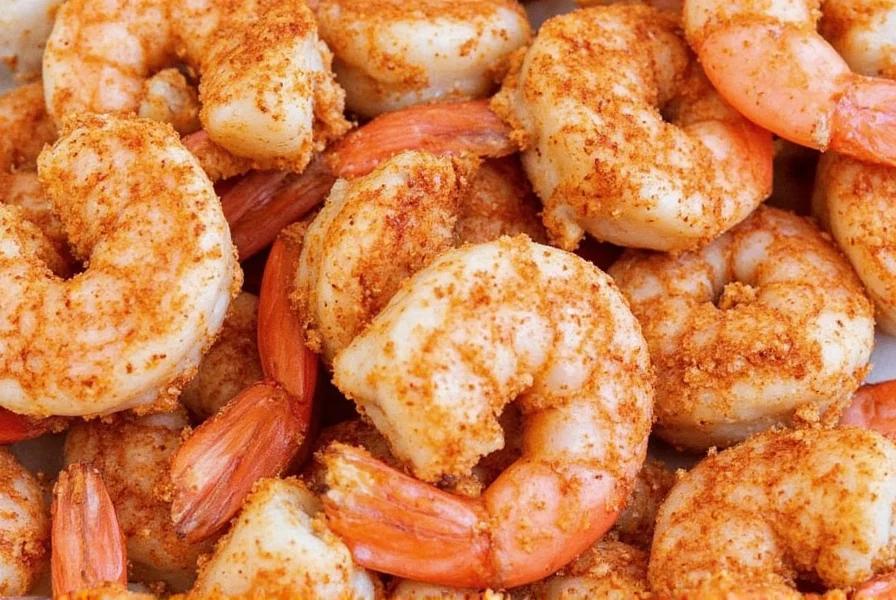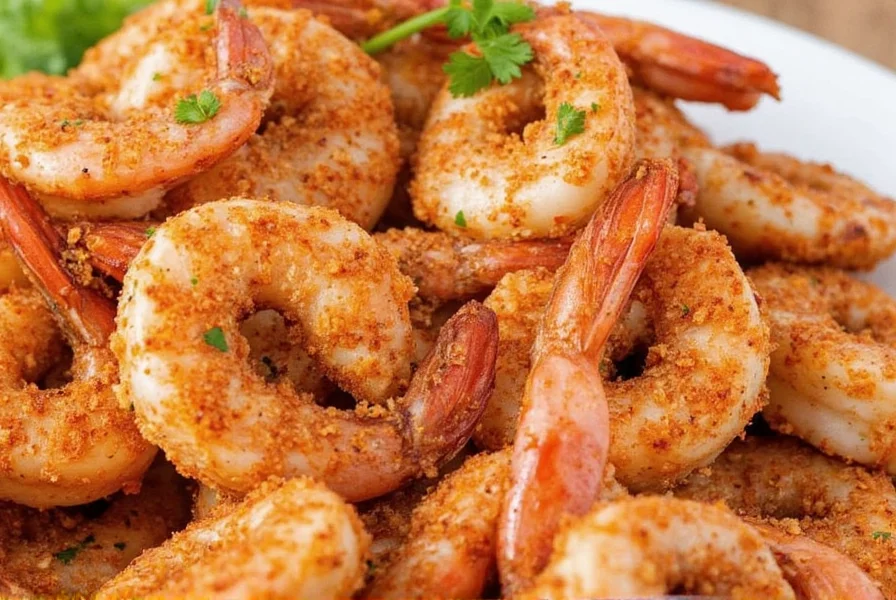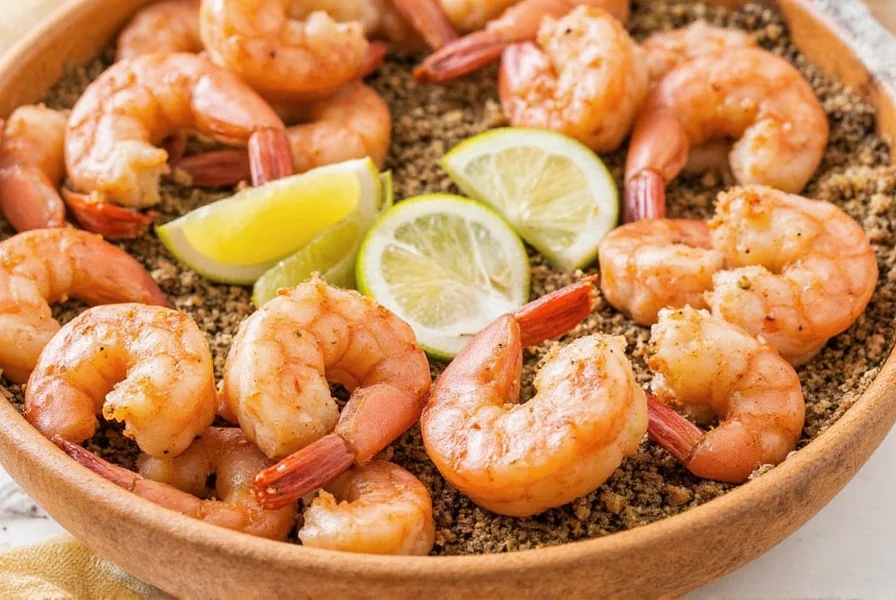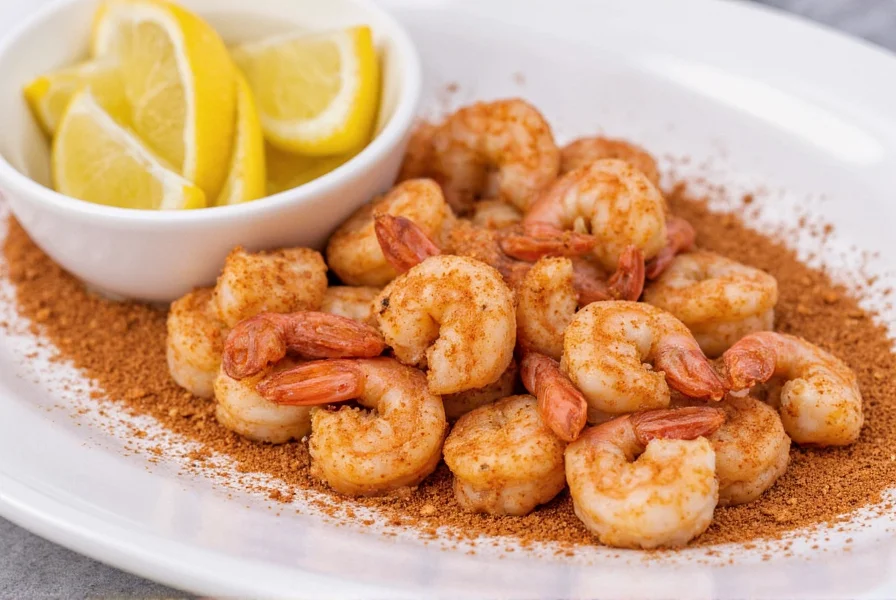Easy Homemade Shrimp Dry Rub Recipe (5 Ingredients)
Craving restaurant-quality shrimp without the fuss? This simple 5-ingredient dry rub delivers bold, balanced flavor in under 5 minutes. Perfect for grilling, pan-searing, or air-frying — no marinades needed.

Yield: 1/4 cup (enough for 1-2 lbs shrimp)
Prep time: 2 minutes
Cook time: 2-4 minutes
Ingredients & Measurements
| Ingredient | Amount | Key Role |
|---|---|---|
| Sea salt | 1 tsp | Enhances natural sweetness and balances flavors |
| Smoked paprika | 1 tsp | Deep color and rich smoky undertones |
| Garlic powder | 1/2 tsp | Umami base without bitterness |
| Onion powder | 1/2 tsp | Sweet savory depth |
| Cayenne pepper | 1/4 tsp | Controlled heat (adjust to taste) |
Pro Tip: For maximum flavor, toast whole spices (cumin seeds, black peppercorns) in a dry pan for 1 minute before grinding. This releases essential oils for 3x more intense flavor than pre-ground spices.
Step-by-Step Instructions
- Prepare shrimp: Rinse 1 lb raw shrimp under cold water. Pat completely dry with paper towels (moisture prevents rub adhesion).
- Mix rub: Combine all ingredients in a small bowl. Whisk until uniform.
- Apply rub: Sprinkle 1-2 tsp rub per 4 oz shrimp. Gently massage into all sides. Avoid over-salting.
- Rest: Let sit 10-15 minutes at room temperature (or 30 minutes refrigerated for deeper flavor penetration).
- Cook: Grill 2-3 minutes per side over medium-high heat, pan-sear 2-4 minutes total, or air-fry 8-10 minutes at 375°F.

Troubleshooting Common Issues
- Too salty? Reduce salt by 25% and add 1/4 tsp lemon zest for brightness.
- Rub burns during cooking? Avoid sugar-based rubs for high-heat methods. Cook at medium heat if using brown sugar.
- Weak flavor? Toast spices before grinding and ensure shrimp is completely dry before applying rub.
Quick FAQs
Can I use this dry rub on frozen shrimp?
No — always thaw shrimp completely first. Frozen shrimp contains excess moisture that prevents proper rub adhesion and results in uneven seasoning. Thaw in the refrigerator overnight for best results.
How long should the rub sit before cooking?
10-15 minutes for quick meals, 30-60 minutes for deeper flavor penetration. The salt will begin breaking down proteins for better texture and flavor absorption.
Do I need oil before applying the rub?
Not required, but a light coat of avocado oil helps spices adhere and prevents sticking during high-heat cooking. For grilling, this creates a perfect sear without burning.
Why This Recipe Works
This minimalist 5-ingredient blend delivers maximum flavor with zero fuss. The key is balancing salt for sweetness enhancement, smoked paprika for depth, and controlled cayenne for heat that complements — not overwhelms — the shrimp's natural taste.

Next time you're cooking shrimp, skip the complicated marinades. Just sprinkle, rest, and cook for restaurant-quality results in minutes. Your tastebuds will thank you!











 浙公网安备
33010002000092号
浙公网安备
33010002000092号 浙B2-20120091-4
浙B2-20120091-4